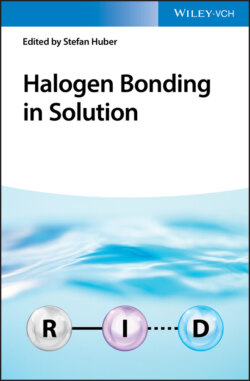Читать книгу Halogen Bonding in Solution - Группа авторов - Страница 32
1.4.7 Decomposition
ОглавлениеWith decomposition analysis of intermolecular forces, contributions of electrostatics, induction or polarization, dispersion, and exchange repulsion are quantified. Decomposition of the halogen bond has allowed researchers to obtain a more complete view of the halogen bond. Symmetry‐adapted perturbation theory (SAPT) [156] and the density functional theory version (DFT–SAPT) [157] are used to describe the bonding components of the halogen bond. Total decomposition of the H3CBr⋯NH3 and F3CBr⋯NH3 halogen bond adducts (Figure 1.16) reveals notable differences between the two [153]. Specifically, the CH3 derivative was largely driven by inductive and dispersive forces, whereas the inclusion of CF3 groups led to a significantly larger electrostatic contribution.
